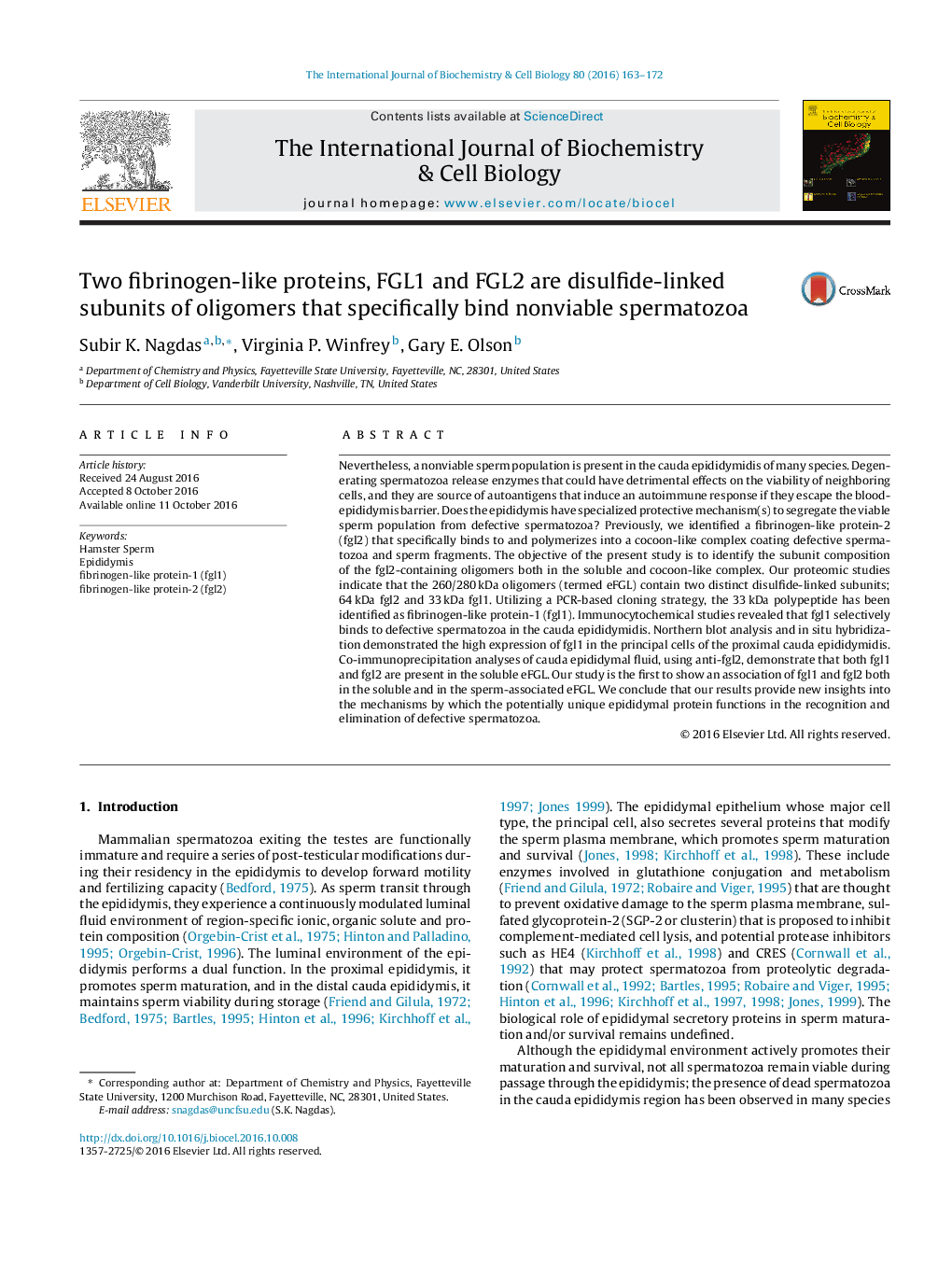| کد مقاله | کد نشریه | سال انتشار | مقاله انگلیسی | نسخه تمام متن |
|---|---|---|---|---|
| 5511511 | 1539863 | 2016 | 10 صفحه PDF | دانلود رایگان |
عنوان انگلیسی مقاله ISI
Two fibrinogen-like proteins, FGL1 and FGL2 are disulfide-linked subunits of oligomers that specifically bind nonviable spermatozoa
دانلود مقاله + سفارش ترجمه
دانلود مقاله ISI انگلیسی
رایگان برای ایرانیان
کلمات کلیدی
موضوعات مرتبط
علوم زیستی و بیوفناوری
بیوشیمی، ژنتیک و زیست شناسی مولکولی
زیست شیمی
پیش نمایش صفحه اول مقاله

چکیده انگلیسی
Nevertheless, a nonviable sperm population is present in the cauda epididymidis of many species. Degenerating spermatozoa release enzymes that could have detrimental effects on the viability of neighboring cells, and they are source of autoantigens that induce an autoimmune response if they escape the blood-epididymis barrier. Does the epididymis have specialized protective mechanism(s) to segregate the viable sperm population from defective spermatozoa? Previously, we identified a fibrinogen-like protein-2 (fgl2) that specifically binds to and polymerizes into a cocoon-like complex coating defective spermatozoa and sperm fragments. The objective of the present study is to identify the subunit composition of the fgl2-containing oligomers both in the soluble and cocoon-like complex. Our proteomic studies indicate that the 260/280Â kDa oligomers (termed eFGL) contain two distinct disulfide-linked subunits; 64Â kDa fgl2 and 33Â kDa fgl1. Utilizing a PCR-based cloning strategy, the 33Â kDa polypeptide has been identified as fibrinogen-like protein-1 (fgl1). Immunocytochemical studies revealed that fgl1 selectively binds to defective spermatozoa in the cauda epididymidis. Northern blot analysis and in situ hybridization demonstrated the high expression of fgl1 in the principal cells of the proximal cauda epididymidis. Co-immunoprecipitation analyses of cauda epididymal fluid, using anti-fgl2, demonstrate that both fgl1 and fgl2 are present in the soluble eFGL. Our study is the first to show an association of fgl1 and fgl2 both in the soluble and in the sperm-associated eFGL. We conclude that our results provide new insights into the mechanisms by which the potentially unique epididymal protein functions in the recognition and elimination of defective spermatozoa.
ناشر
Database: Elsevier - ScienceDirect (ساینس دایرکت)
Journal: The International Journal of Biochemistry & Cell Biology - Volume 80, November 2016, Pages 163-172
Journal: The International Journal of Biochemistry & Cell Biology - Volume 80, November 2016, Pages 163-172
نویسندگان
Subir K. Nagdas, Virginia P. Winfrey, Gary E. Olson,